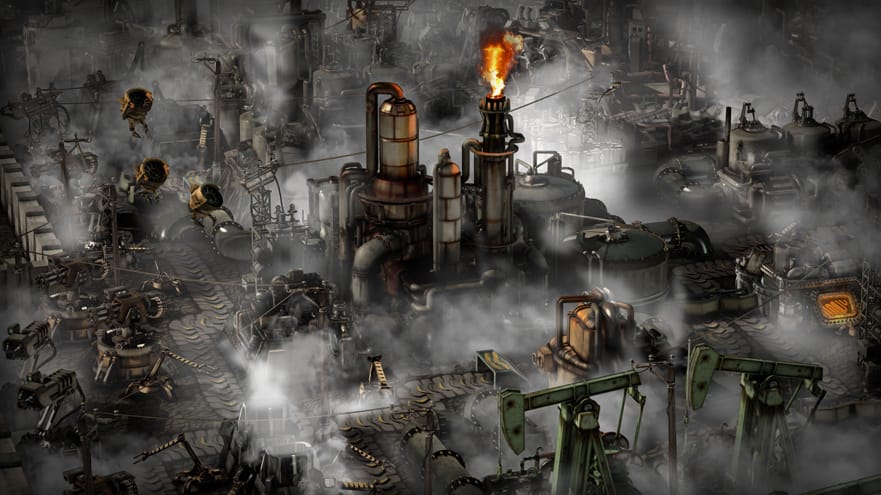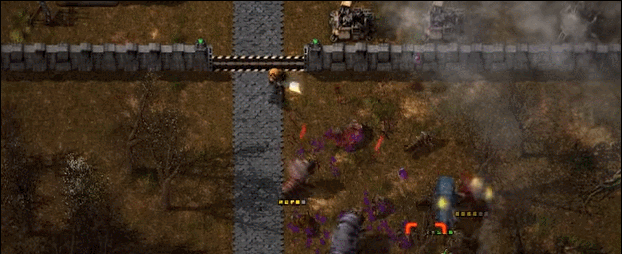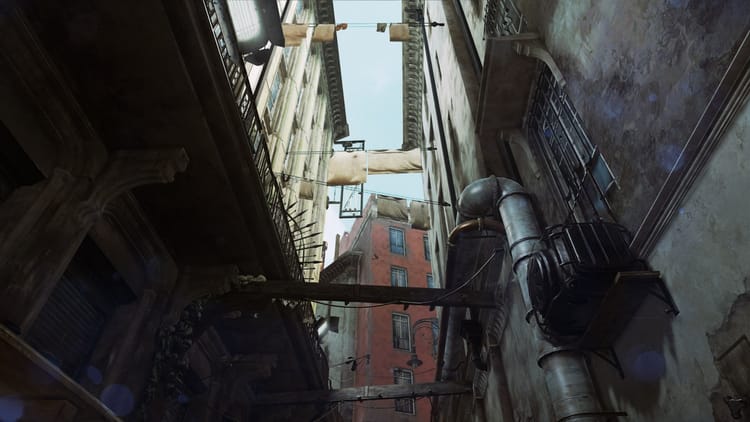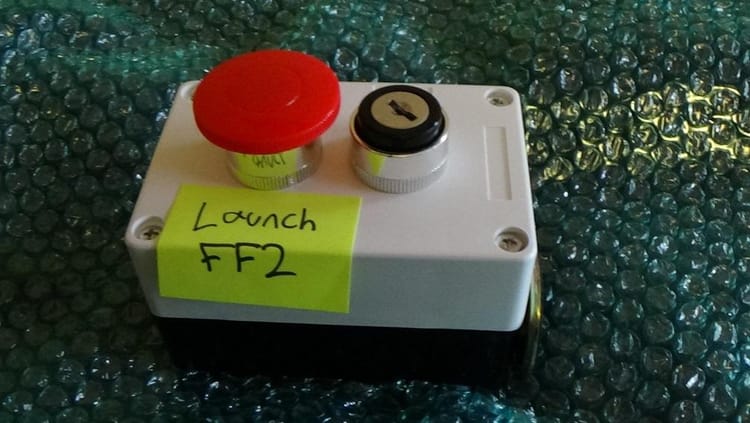Imagining the technological singularity with Factorio

The trouncing of the world’s top Go player by Google’s AlphaGo AI has led more than a few people to speculate on how we’ll be feeling the ramifications of this victory in the near future. What this speculation mainly concerns is the question of what will happen if software continues to eat the world with such a voracious appetite that we are only beginning to truly fathom. For now, “Big Data,” the truly massive collection of data that humans collectively generate through any and all combinations of internet browsing history, biometrics, credit card payments, and more, provides the equivalent of a well balanced diet to these insatiable AIs, giving them plenty to process day in and day out.
AlphaGo, equally hungry, was “taught” how to act like us by looking repeatedly at another equally massive dataset: the thousands of past Go games played between both amateurs and professionals. This process of repeatedly analyzing large datasets, either by AlphaGo or any other AI, in domain-specific scenarios is known as “deep learning,” and speculation on what a world full of well-fed AIs looks like is currently being highly influenced by the AI researchers working in and around this topic. AlphaGo’s victory was, in some ways, yet another vindication of this model.
“Deep learning” can be applied to much more than Go though, and one must realize that we generate massive amounts of data daily about us and almost everything we do. This is to say, then, that computers and AIs are learning not just about Go, but about us, writ large. Your phone now knows how you’ll likely travel to work (and on what days you’ll choose to take a shortcut) and your Facebook feed is an algorithmically curated set of pitch-perfect posts for your predicted mood and current interests. But, as evidenced by AlphaGo’s victories over Lee Sedol, computers and AI are becoming not only good at predicting what it’s like to be us, but are quickly becoming much better at what we do than we could ever hope to be. And, when an AI can beat most humans in Atari 2600 games or learn to read, the obvious question arises, “Will this affect me too?”
We will sail past the technological singularity sooner than we may imagine.
Founder of Google’s “Deep Brain” deep learning project Andrew Ng has already expressed concern that “There is a high chance that AI will create massive labor displacement, putting people out of jobs.” If a sophisticated AI can become a Chess Grandmaster in 72 hours and paint like Van Gogh, the question seems not a matter of “if”, but when—How long before the master accountant AI? The 10x programmer? The pulitzer journalist? If it is truly a whimper that ends the world, these seemingly incongruous and unrelated advances in AI research may signal not only that our time is nigh, but that we will sail past the technological singularity sooner than we may imagine.
These tiny murmurs of progress are likely paving the road to the development of what’s known as the “superintelligence,” but where that leaves humans after it’s “done” is the subject of pure, if reasoned, fiction. Tim Urban over on WaitButWhy gives a neat overview of what this future could be, ranging from “our worst nightmare” to “our greatest dream,” and from Her (2013) to Transcendence (2014), opinions seem similarly, and predictably, split on what happens after the technological singularity. It’s all emotional speculation because the point of the superintelligence is that we, as humans, can’t understand or comprehend it. But, as humans who still must plan for and potentially preempt the future, when it comes to simply understanding what may be next, we have a few options.
Though looking for verisimilitude through simulation can be a potentially destructive fool’s errand, the Steam Early Access title Factorio provides us with a glimpse into what this future may actually be like. Crash landing on a planet with no narrative exposition to speak of, Factorio starts the player off on “a remote and unexplored planet full of life, riches, and natural resources,” and from there, as the trailer says, “your only possibility to survive is the use of your talent to create technology.” Technology here does not take the Civilization angle of aqueducts, the printing press, or the wheel, but instead manifests in industrial logistics structures (factories, supply belts, robotic arms, etc.) meant only to exploit the unknown planet’s aforementioned richness and produce refined materials for… we’re not sure.

The question of who, why, and for what reason you actually need to build anything is forever unclear, and nowhere on the current development roadmap is there anything indicating that this will be changing. As the trailer said, you must build to survive, but as a player in the game, you survive just fine without building anything. You can let the game run for hours and hours on its own, only to come back to a serene planet with your worker still standing idly by.
However, should you choose to build—and you should, because building factories and logistics networks in this game is satisfying to the point of becoming addicting—two things happen. One, the greater question of “why” never dissipates; instead, it hangs constantly over your spidering network of interlocking and articulating mechanical arms, supply belts, fabricators, and furnaces. Two, monsters, or as Factorio ungenerously calls them, “natives,” attack. As the trailer says:
“Beware, you’re not alone in this planet. Natives will try to recover what belongs to them, forcing you to focus the production into combat assets.”
To be clear then, Factorio contextualizes the work you’re doing for reasons nebulous at best as something to be defended at all costs. This means, in the case of the game, killing off the native population of creatures who oppose your pollution and exploitation of their natural environment that, upon your arrival, was by all indicators in a point of peaceful equilibrium. Dogmatic then, is the idea of work and progress in Factorio, its existence and implementation being the unquestioned and veered towards “attractor state” of the player in its narrative universe. All of the actions you can take in the game directly forward “work” in one form or another (building, mining, crafting, transporting)—you are given no tools to question its position or role in this foreign environment, it being quite literally the only thing you can do.
The machine you created functions without you.
This point, too, is echoed in Factorio’s actual structures, most often single purpose machines that do one thing well forever, stopping only to wait for more work. Gyrating arms like those from automobile assembly plants will quickly and efficiently move resources and goods from here to there, and will wait patiently for another object to arrive. This period of waiting starts off being relatively long because you, as a player, are forced to manually provide your structures with their required materials. Quickly though, you realize you can connect X to Y to transport A to Z (which turns into B that moves to C…), in turn almost entirely eliminating any need to wait for anything. The pull of automation is strong though, and with the later addition of “logistics robots” for easily transporting goods across long distances, you end up obsoleting most forms of your own labor, leaving you tasked only with killing the literal “bugs” in your system (though unmanned turrets can mostly take care of this as well). The machine you created functions without you.
This is the post-AI future, where whole systems of automation not only replace us by design, but also replicate themselves in novel situations (like a remote planet) where, with the still-needed and likely disdained human spark, they are able to almost instantly reach a state of insular automation that furthers some nebulous goal that we humans are simply brought along to help out with. Though your factory system starts out as a very “knowable” combination of belts, arms, and supply crates, the thing as a whole slowly grows beyond your total comprehension. Understanding how coal got along the first belt you built to that first furnace was easy, but when the belts multiply by an order of ten and you add in trains, quadruple your furnaces, and throw in some assemblers for good measure, thinking outside of any local patch of automation is incredibly difficult. Your role in Factorio moves rapidly from an individual agent of immense change to a “conductor” of systems, gently guiding your factories towards greater and greater productivity with your carrot-on-a-stick goal of “survival.” Remember, if you don’t build anything, nothing will attack you.

Yet, as players, we do still seek the carrot, and the nebulous goal you chase may very well represent what humanity’s “goals” in general may seem like from our vantage point in an AI-driven future. When AlphaGo made a move that seemed inhuman, it wasn’t working from some arbitrary data set—it was using human data and using it better than anyone else ever had before. AlphaGo made a decision by learning past us, “seeing the matrix” so to speak, and could make seemingly incongruous and improbable decisions based on a deeper understanding of our own data than we have.
Factorio’s tech tree pushes us to make machines that help us make machines and weapons to stop anyone from stopping us, but we should consider the possibility that we don’t fully understand what these machines are actually doing. To us, a furnace is a furnace, it smelts raw ore. But to a well-fed AI? Instead of Go games, what could an AI do with “factory data”? What “moves” does it make? It’s worth considering that the notion of “work” we see being executed in the game is not the same idea of “work” an AI understands when provided with Factorio-like data. Even as the game unceremoniously ends upon the completion of your stated goal to launch a rocket into space, the player is prompted with a simple message: “Finish” or “Continue.” With our comprehended work seemingly “completed,” some “work”, to our surprise and bewilderment, must still, and forever more, be done.
Header image: Industry by Roman Pfieffer



